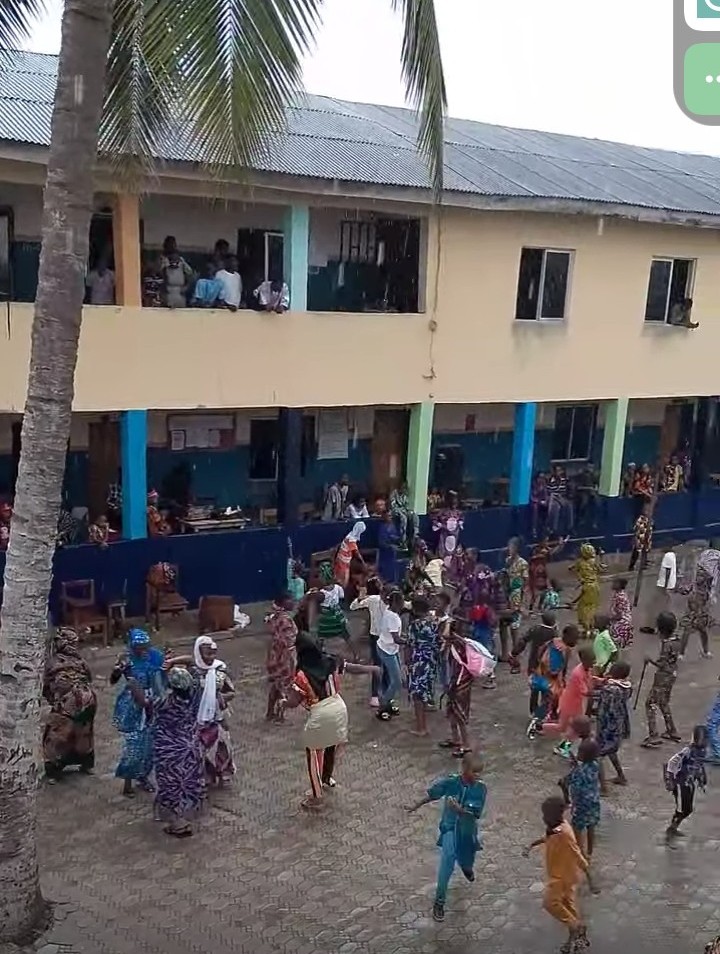It was the first school cultural day I witnessed, and I had no idea how the setting usually plays out, so I arrived early to avoid missing any part of it. However, before I knew what was going on, the school compound burst into life with different colors, rhythms, and excitement. On this special day, I couldn't believe that parents were so ingrained in their cultures, and I gave them kudos on that as all students arrived in their traditional attire.
Most Yoruba male students put on Agbada (flowing gown robe) buba (tunic) and sokoto(trousers) and crowned it with Fila Abetiaja ( Dog-ear cap) as few were on a traditional long shirt and trousers while holding a horse tail whisk and all their fabrics were Aso Oke ( a prestigious high high-quality hand hand-woven cloth), Adire ( tie and dye), and Aso Ofi (hand-woven cotton). Most of their females put on Iro (wrapper), buba( blouse), Gele(head tie), Ipele ( a shoulder sash often draped across the chest ), and Ileke(beads).
The regal Isiagu (lion head pattern tunic ) and red caps of the Igbo with walking stick made the day extremely colorful while the Hausa walked in majestically on their baba riga ( a large flowing gown richly embroidered) kaftan (long tunic worn with trousers), Hula cap ( embroidered round cap) and turban as their female put on Abaya(colorful lightweight fabric) Hijab( headscarf), zani ( wrapper tied at the waste ) and also put on different accessories. What I observed was that all the tribes made use of beads, be it on their head, legs, and hands, including all other minority tribes.
The sun had been blazing brightly since the assembly ground was alive with sounds of drums, songs, and laughter, and the dishing of different delicacies. Then, with a sudden clap of thunder, the heavens opened, and the rain poured down in torrents, scattering the dust of the play. At first, many students ran under the canopies and verandas, but to my surprise, a few of them entered the rain, stamping their feet in puddles that sprayed water into the air.
Yoruba girls in their Gele swung their Iro gracefully, while the Igbo boys in Isiagu thumped their chest, and Hausa dancers twirled with arms stretched wide. The Edo students with coral beads shook their heads so the ornaments rattled like drums while the Ebira troupe clapped in rhythm, adding energy to the rhythm as the music player played different songs from the speakers.
I went upstairs and did a video recording of the scenes, as it was unbelievable, while the rain fell like drones buzzing the sky, and soon, the school ground became a festival of movement, as laughter rang out, as song rose louder than the storm, carrying words of unity and celebration. Even teachers at first hesitated but later joined in clapping and singing and letting the rain wash away formality. What could have been the end of the program became its brightest moment. The dance in the rain lit up the school with rare joy, the joy that uplifted the day proving that culture is not only in costumes that display but in the unbroken spirit that celebrates life using dance, no matter the weather.
“ You will send a copy of the dance video for me, “ a colleague said as he couldn't believe I took the time to record everything.
“No problem with that, “ I said, smiling as I really enjoyed that day and the embodiment of a great view displayed as almost everyone was dancing in the rain.

Thanks for reading through. The picture was taken by me.